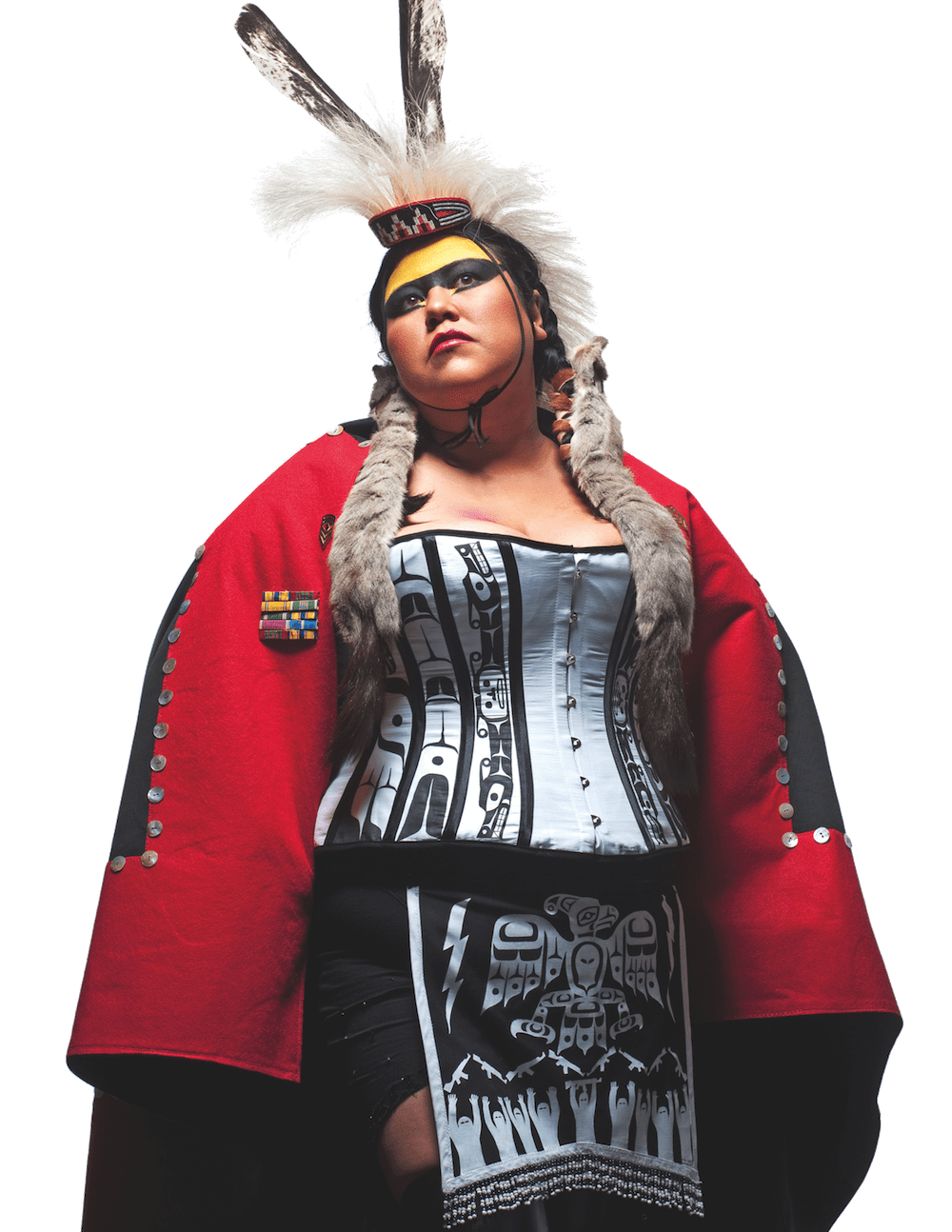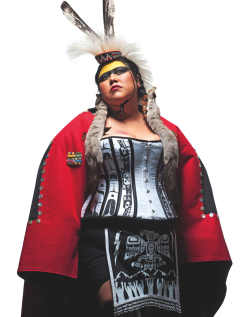With the Idle No More protests and Attawapiskat Chief Theresa Spence’s hunger strike, the voice of Aboriginal youth has rarely been stronger or more prominent in Ontario. Appropriate to this mood of revolution and activism is The Power Plant’s newest exhibition, “Beat Nation: Art, Hip Hop and Aboriginal Culture.” “Beat Nation” highlights the voices of young Aboriginal artists who integrate urban youth culture and ideas about Aboriginal identity in twenty-first century North America.
Featuring a variety of artists from places across the continent, including Nunavut, Alaska and New Mexico, this exhibition’s roots begin in hip hop and branch out to cover a variety of artistic mediums, including graffiti, skateboard culture, and performance art. Hip hop culture has proven to be a driving force for urban Aboriginal youth since the early 1990s, providing an outlet for creating a dynamic interplay between new and traditional, rural and urban,and indigenous and non-indigenous languages. Although this mode of expression is contemporary, the opinions and issues that are being addressed by First Nations hip hop artists are age old, reminding audiences that the frictions that began many years ago are still very much present today.
Issue of unresolved land claims crop up repeatedly among the works that are featured in the “Beat Nation” exhibit. One piece of graffiti art, which spans an entire wall of the exhibit, claims in bright red lettering ,“There can never be justice on stolen land.”A series of photographs depicts artist Cheryl L’Hinrondelle’s mark on the shoulder of the TransCanada Highway, which cuts through the reserve at Kettle and Stoney Point. L’ Hirondelle asserted her presence on this piece of land by using sticks and rocks to spell out in Cree syllabics: wapahta oma iskonikan askiy, which translates to “look at this leftover strip of land,” emphasizing that the reserves apportioned to the indigenous peoples of Canada are but remnants of the much larger territories that were once in their possession.
The reclaiming of Aboriginal languages is another issue that has seen a resurgence in recent years. Due to the enforced enrollment of First Nations children in residential schools, Aboriginal languages were on the decline for some time, and generations of First Nation peoples were unable to express themselves in their native languages. In recent years, however, Aboriginal youth have been pushing to reclaim their mother tongues. “Beat Nation” reflects this movement through several installations, such as a short art film that proclaims, “You cut my tongue, now only my heart speaks,” as well as a functional, homemade turntable. The turntable in particular is quite a powerful piece, made entirely from different kinds of wood, with records carved from pine, oak, walnut, and spruce instead of vinyl. When played, visitors hear the artist practicing his native Mi’kmaq language, along with the sounds of the static caused by the wood grain. The artist’s efforts to preserve his cultural history are thus facilitated by an older method of recording the past: the rings of a tree.
The remaining portion of “Beat Nation” is largely devoted to re-appropriation — Aboriginal artists reclaiming ideas and traditional identities that have been misconstrued over time. The exhibit boasts skateboard trucks carved out of moose antlers, a playful music video critiquing German fascination with North American “Indians,” and iPod accessories decorated with the beading of traditional indigenous craft. One of the films in the exhibit juxtaposes footage of a young man break dancing to traditional drum beats with footage of a traditional Haida dancer dressed in full regalia as she dances to dubstep. Another highlight of the exhibit is a panoramic video, projected onto a skateboard, of the Inuit sport “Blanket Toss,” which is being played against the backdrop of the Nunatsiavut landscape. This beautiful film installation connects both a traditional pastime and a contemporary sport to the landscape of the North.
“Beat Nation” illustrates the commitment of Aboriginal youth to politics, land rights, native languages, and storytelling. Each installation in the exhibit affirms the tenacity and strength of the artists’ voices, which loudly proclaim that Aboriginal youth are moving into the future with the determination to right the wrongs of the past.
“Beat Nation” runs at the Power Plant until May 5, 2013



